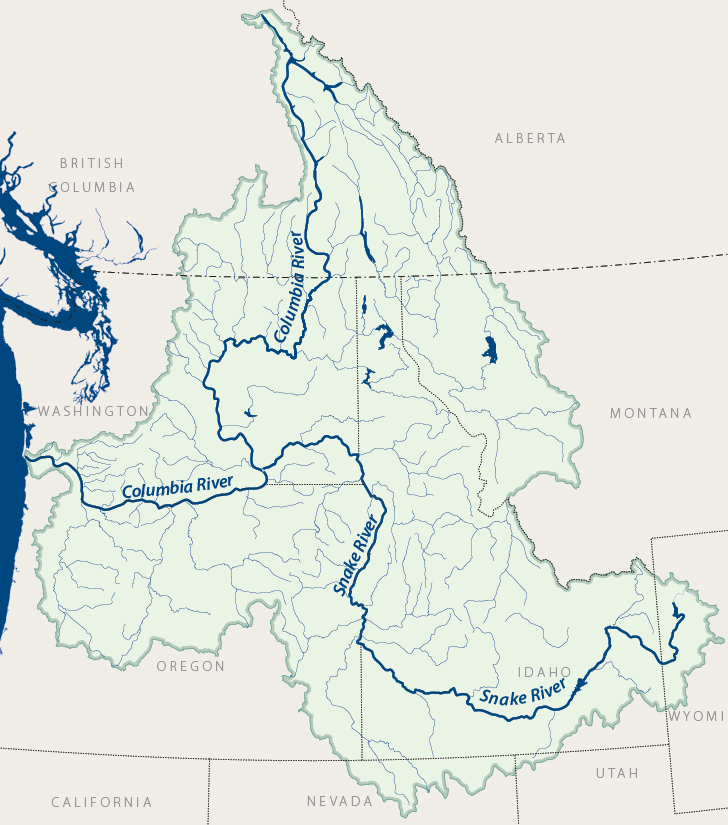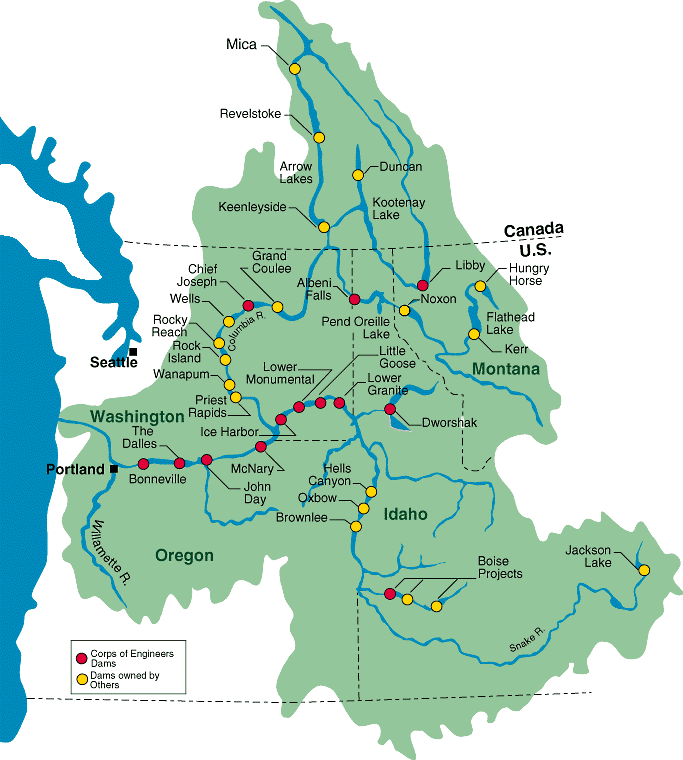Columbia River Basin
The Columbia River drains most of Washington and Idaho, half of Oregon, Montana west of the Continental Divide, small portions of Wyoming, Utah, and Nevada, and 40,000 square miles of British Columbia. Encompassing nearly 260,000 square miles, the Columbia River Basin is roughly the size of France. Learn more about the Columbia River Basin »
For thousands of years, our tribes—who now make up the Nez Perce, Umatilla, Warm Springs and Yakama nations—enjoyed the bounty of a land blessed with abundant resources upon which our culture depended. Some of the most important were the rich assemblage of anadromous fish populations in the rivers of the basin. More about the culture » and here »
Salmon populations were numerous and represented five species: chinook (Oncorhynchus tshawytscha), coho (O. kisutch), steelhead and rainbow (O. mykiss), sockeye and kokanee (O. nerka), and chum (O. keta). The Columbia Basin supported the Pacific’s largest run of chinook, or king salmon, known to weigh as much as 125 pounds and measure more than five feet in length (Brown 1982). Other important native anadromous species included the lamprey (Entosphenus tridentatus [FORMERLY Lampetra tridentata]) and white sturgeon (Acipenser transmontanus). Other fish species were also used. More about anadromous fishes » and here »
In 1855 when tribal peoples signed treaties with the United States, they reserved rights to practice their sustainable cultures and to maintain the natural resources on which their cultures depended. While yielding control of vast tracts of land, the tribes retained ownership of the salmon runs so vital to their culture. These treaties, though challenged often, have been reaffirmed repeatedly as legally binding documents in numerous court decisions. More about treaty rights »
With American settlement of the Columbia Basin, water development primarily for electricity and irrigation dramatically altered the environment for fish and for the basin’s indigenous peoples. The amount of habitat available to anadromous fishes is 45% of the historical tributary and mainstem habitat; nearly 1700 miles of habitat is now inaccessible. Chief Joseph and Grand Coulee dams on the Columbia River and the Hells Canyon complex of three dams on the Snake River completely block access to upstream fish habitat. More about reductions in available habitat »
Today Columbia Basin tribes are leading an effort to restore historical fish passage throughout the basin »








